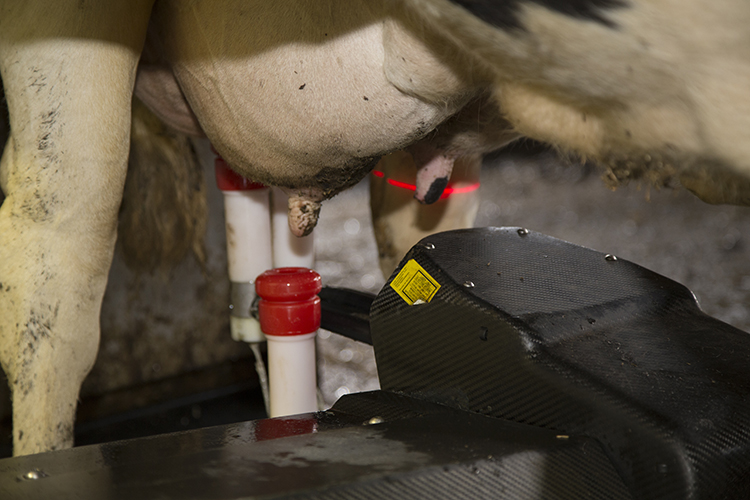
Those were findings from a University of Minnesota study investigating the factors that have the greatest impact on milk production per robot.
The preliminary data also showed that at the herd level, visits per day and average milking speed remained important. Additionally, farms that utilized manual alley scraping tended to have lower production per robot as compared to farms that had slatted floors and robotic scraping.
Freestall bedding was also correlated with production as farms that had sand or water beds tended to register more milk per robot than farms with mattresses.
In a presentation at the Minnesota Nutrition Conference, University of Minnesota researcher Marcia Endres suggested that robotic farms looking to optimize production per robot should reduce box time per cow. Breeding for cows with easier attachment rates, keeping up with equipment maintenance, removing hair from udders, and trimming tails are all strategies for reducing the amount of time a cow spends in the box.
Endres also recommended focusing on excellent transition cow care, cow comfort, well-balanced diets, and optimal reproductive management.
High milk production per robot is proving to be an important benchmark for farms with automatic milking systems. In order to make the most of each minute in the robot, farms must pay attention to the details.
September 26, 2016








